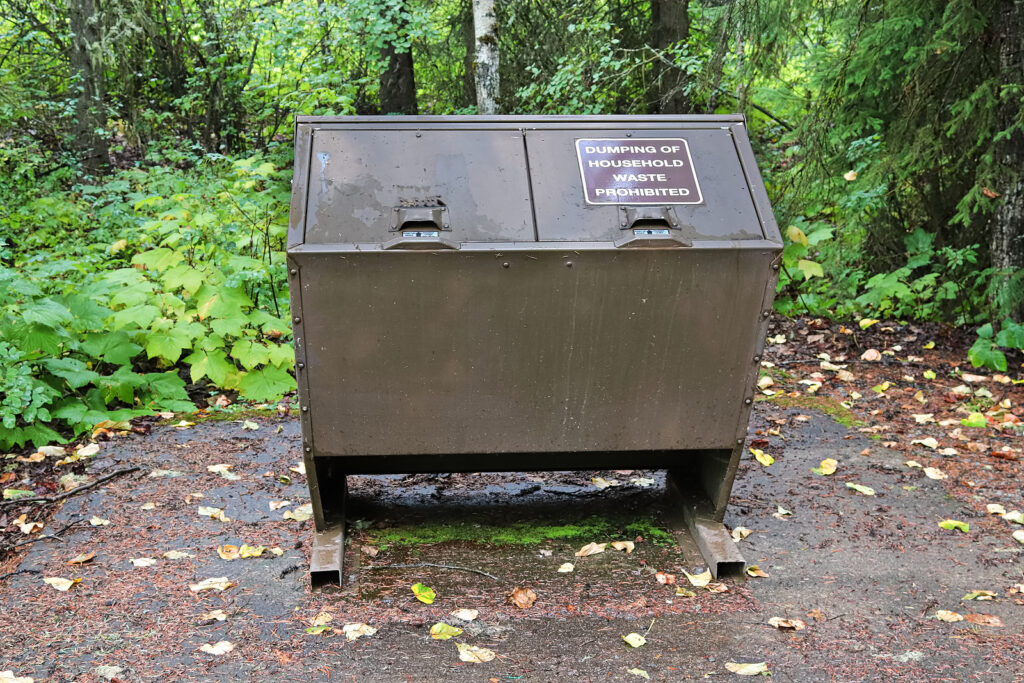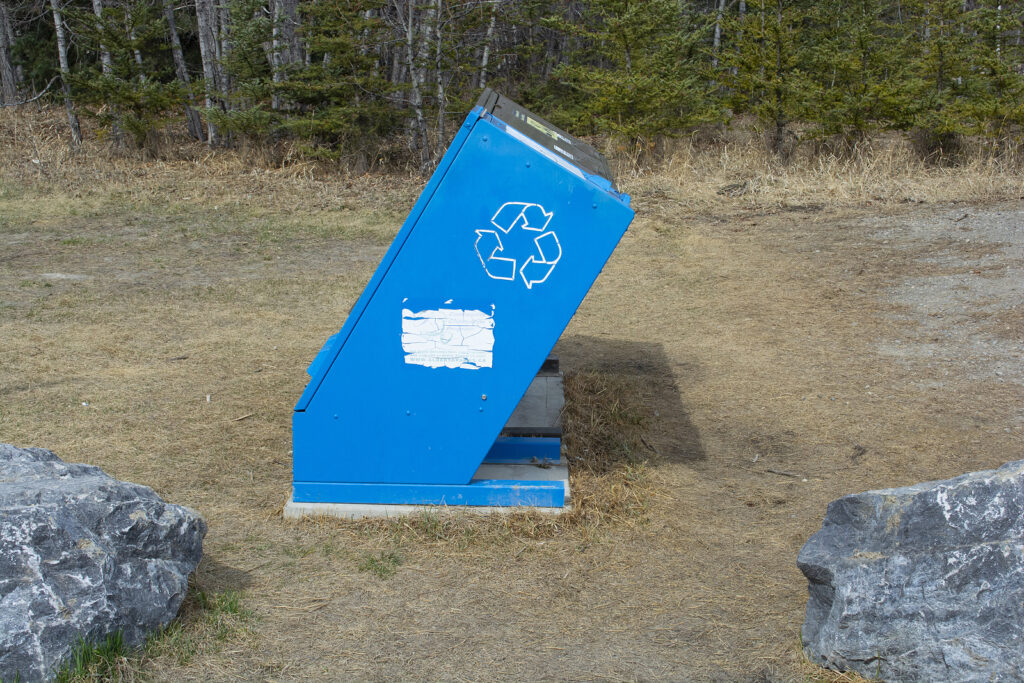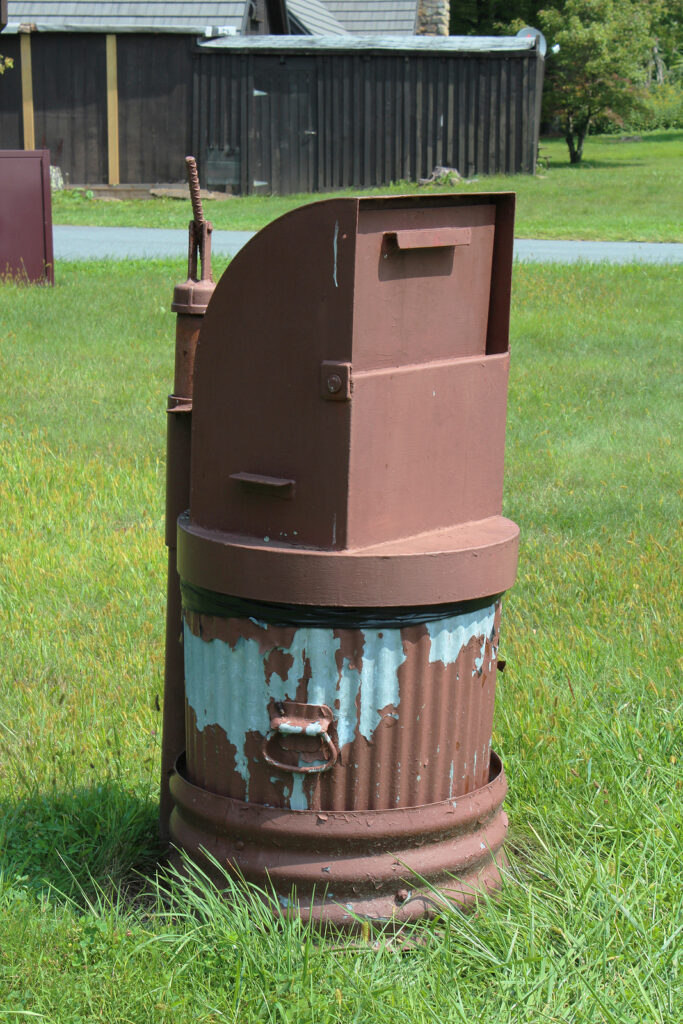DIY Bear-Proof Trash Can
Living in an area teeming with wildlife has been a truly unique experience for me. The natural beauty and tranquility of my surroundings are simply unparalleled, offering a deep sense of connection to the environment. However, this idyllic setting also comes with its own set of challenges, most notably the occasional visits from bears, who seem to have a particular interest in my trash.
To tackle this issue in a way that's not only effective but also environmentally friendly, I decided to take matters into my own hands and create my very own DIY bear-proof trash can. In this detailed guide, I'll share my journey and the step-by-step process of crafting this essential solution for coexisting harmoniously with the local wildlife.
The Significance of Bear-Proofing
To embark on the journey of crafting your own bear-proof trash can, it is imperative to grasp the reasons behind the necessity of bear-proofing your trash cans. Bears, owing to their natural instincts, exhibit a strong attraction to human food and refuse. Once they identify an easily accessible food source, they can establish a repeated pattern of return visits.
This not only poses significant risks to human safety but also jeopardizes the well-being of the bears themselves. By taking measures to secure your trash, you not only play a role in safeguarding these magnificent creatures but also mitigate the potential for perilous human-bear encounters. This proactive approach can have far-reaching benefits for both humans and wildlife alike.

Gathering Materials
The Trash Can
The centerpiece of this project is, of course, the trash can itself. It's essential to select a trash can that is sturdy and durable. Ideally, you should invest in a heavy-duty, bear-resistant trash can if it fits within your budget. These specialized cans are designed to withstand bear encounters effectively. However, if you prefer to retrofit your existing trash can, make sure it is constructed from robust materials such as metal or reinforced plastic.
Latches and Locks
To secure your trash can, you will require appropriate latches and locks. It's crucial to choose latches and locks made of strong, rust-resistant materials. Bear-resistant latches and locks can often be found at stores specializing in outdoor and wildlife-proofing equipment.
Metal Straps
In addition to latches and locks, you will need metal straps to reinforce both the body and the lid of the trash can. These straps serve to add an extra layer of protection, making it significantly more challenging for bears to pry the container open.
Tools
To complete this DIY project successfully, you will need several tools on hand, including:
- Screwdriver: A screwdriver is a versatile tool that comes in various types, such as flathead and Phillips head, and is used for driving screws into materials. Depending on the project, you may need different sizes and types of screwdrivers.
- Drill: A drill is a power tool that allows you to create holes in various materials, including wood, metal, and plastic. It is crucial for tasks that involve attaching components or mounting items securely.
- Screws and Bolts: These fasteners come in various sizes and types, and having a variety on hand ensures you have the right hardware for different parts of your project. Screws are typically used for securing materials together, while bolts and nuts provide a strong and durable connection.
- Pliers: Pliers are versatile hand tools that come in various types, such as slip-joint pliers, needle-nose pliers, and lineman's pliers. They are used for gripping, bending, and cutting wires and other materials, making them indispensable for a wide range of tasks.
- Measuring Tape: Precision is key in many DIY projects, and a measuring tape allows you to accurately measure and mark materials before cutting, drilling, or assembling. Having a measuring tape ensures your project's dimensions are precise, leading to a more professional and polished outcome.
Now, let's move on to the step-by-step instructions for creating your very own bear-proof trash can.

DIY Bear-Proof Trash Can: Step-by-Step
Step 1: Evaluate the State of Your Trash Can
Before embarking on the bear-proofing construction process, conduct a thorough evaluation of your trash can. Ensure it is not only clean but also free from any lingering food odors or residues that might attract bears. Moreover, identify and remove any weak or damaged components that could compromise the security of the can. This initial assessment sets the foundation for an effective bear-proofing project.
Step 2: Reinforce the Body with Metal Straps
The first practical step in bear-proofing your trash can is to reinforce the body with sturdy metal straps. Measure and cut the straps to fit snugly around the circumference of the can. Use a drill to securely attach the straps, ensuring they are evenly spaced and firmly fastened. This reinforcement will significantly enhance the structural integrity of the can, making it less susceptible to bear tampering.
Step 3: Fortify the Lid
Bears are renowned for their exceptional strength, so it's imperative to fortify the lid of your trash can. To achieve this, attach additional metal straps across the lid in a crisscross pattern. This unique design makes it exceedingly difficult for bears to pry the lid open. Verify that the straps are tightened properly and fastened securely to withstand the bear's attempts to access the contents.
Step 4: Install Latches and Locks for Extra Security
Moving forward, proceed to install robust latches and locks. Position the latches on the lid and the corresponding lock mechanisms on the body of the trash can. Ensure they align correctly, allowing the lid to securely close and lock in place. Conduct a thorough test to ensure that the locking system functions correctly and can withstand bear pressure.
Step 5: Put Your Bear-Proof Trash Can to the Test
To guarantee the effectiveness of your newly bear-proofed trash can, subject it to rigorous testing. Attempt to open it forcefully to determine if it remains securely closed. If any weaknesses or vulnerabilities are detected, make the necessary adjustments or reinforcements promptly. This step is essential to ensure the complete bear resistance of your trash can.
Step 6: Maintain a Clean Environment
To keep bears at bay and minimize the chances of attracting them to your trash can, it is crucial to maintain a consistently clean environment. Before disposing of items in your trash, rinse out containers thoroughly to eliminate food odors. Additionally, avoid discarding strongly scented items such as fish scraps without first sealing them in odor-proof bags. These preventive measures will further enhance the bear-proofing of your trash can and promote bear safety in your area.
Additional Tips for Bear Deterrence
While investing in a bear-proof trash can is a pivotal step in effective wildlife management, it's important to adopt additional strategies to maximize bear deterrence on your property. Here are some valuable tips to bolster your efforts:
- Remove Attractants: In addition to securing your trash, take proactive steps to eliminate other potential bear attractants. This includes keeping bird feeders, pet food, and any scented items indoors or stored in bear-resistant containers. Bears have an acute sense of smell, and any lingering odors can entice them to your property.
- Install Motion-Activated Lights: Illuminate the vicinity around your trash can with motion-activated lights. Bears are naturally wary of well-lit areas, as they prefer to avoid detection. The sudden illumination can startle them and deter them from approaching your trash or home.
- Utilize Bear Spray: It's essential to have bear spray readily available and know how to use it effectively in case of a bear encounter. Bear spray is a non-lethal deterrent that can help protect you and the bear by discouraging aggressive behavior. Familiarize yourself with its usage instructions and carry it with you when exploring bear-prone areas.
- Educate Your Neighbors: Be an advocate for bear-awareness in your community. Encourage your neighbors to take similar precautions by bear-proofing their trash cans and adopting measures to prevent bear encounters. A collective effort can significantly reduce the likelihood of bears becoming a nuisance in your area.

Selecting the Right Location for Your Bear-Proof Trash Can
When it comes to safeguarding your property against curious bears, the placement of your bear-proof trash can is just as important as its construction. To ensure maximum effectiveness in deterring these formidable creatures, consider the following factors when selecting the perfect location:
Adequate Lighting
Bears tend to avoid well-lit areas, so it's advisable to position your trash can in a spot with ample illumination. This not only discourages bears from approaching but also enhances security around your property.
Distance from Your Home
To minimize the risk of bears venturing closer to your living space, maintain a safe distance between your home and the trash can. Placing it too close may inadvertently attract bears to your property, posing a threat to both you and the animals.
Accessibility for You, Inaccessibility for Bears
Strike a balance between convenience and security by ensuring that the trash can remains easily accessible for you while being impervious to bears. Keep in mind that bears are remarkably agile and strong, so choose a location that presents a formidable challenge for them.
Local Regulations
Always be aware of local regulations and guidelines that may govern the placement of trash cans. Some areas may have specific requirements or restrictions to help minimize wildlife interactions.
Educate Yourself About Local Bear Behavior
To coexist harmoniously with bears in your vicinity, it's crucial to delve deeper into their behavior and preferences, which can vary significantly depending on the species and habitat. Here's a comprehensive guide on what you should consider:
Bear Species Identification
Begin by identifying the specific bear species inhabiting your area, whether it's black bears, grizzly bears, polar bears, or another species. Each species exhibits distinct behaviors and responses to different stimuli.
Hibernation Patterns
Familiarize yourself with the hibernation patterns of the local bear population. Understanding when bears typically enter and emerge from hibernation can help you anticipate their presence and adapt your actions accordingly.
Foraging Habits
Bears are opportunistic feeders, and their foraging habits may vary depending on the season and food availability. Research the local flora and fauna that bears are attracted to, as well as their preferences for different types of food sources.
Migration Routes
Learn about the typical migration routes and movement patterns of bears in your region. Bears often follow established routes, and being aware of these can help you avoid encounters.
Expert Guidance
Seek advice and insights from local wildlife experts, conservationists, or authorities who possess specialized knowledge about bear behavior in your area. They can provide valuable information on recent bear sightings, behavioral trends, and safety measures.
Install a Bear Fence
In regions where bear encounters are a recurring concern, taking proactive measures such as installing a bear fence around your property can prove highly effective. Here's a comprehensive guide to help you navigate this protective measure:
- Understanding Bear Fences: Bear fences are specialized electric fencing systems meticulously designed to discourage bears from entering your property. These fences deliver a non-lethal electric shock upon contact, serving as a powerful deterrent against curious or hungry bears.
- Professional Consultation: Prior to installation, it's crucial to consult with a certified professional experienced in bear management and fence installation. They can assess your property, recommend the appropriate fence type, and ensure compliance with local regulations.
- Optimal Placement: Strategic placement of the bear fence is key to its effectiveness. Work closely with the professional installer to identify vulnerable entry points and create a comprehensive fencing plan. Bear fences are typically positioned around key areas like trash storage, gardens, and outdoor food storage.
- Compliance with Local Regulations: Bear fences may be subject to specific regulations and guidelines in your area. Consult with local wildlife authorities to ensure that your fence installation adheres to these rules and permits, as non-compliance could result in legal consequences.
- Ongoing Maintenance: To sustain its effectiveness, regularly test and maintain the electric fence. This includes checking the voltage, inspecting the wiring for damage, and ensuring the energizer is functioning correctly. A well-maintained bear fence serves as a reliable deterrent year-round.
- Educate Yourself: Familiarize yourself with the proper usage and safety precautions associated with bear fences. Ensure that all household members are aware of how to safely navigate the fence to prevent accidental shocks.
FAQs (Frequently Asked Questions)
1. Why is it necessary to bear-proof my trash can?
Bear-proofing your trash can is essential for several reasons. It helps prevent bears from accessing human food and garbage, which can attract them to residential areas. By securing your trash, you reduce the risk of dangerous bear encounters, protect the bears themselves, and maintain a safer environment for both humans and wildlife.
2. Can I retrofit my existing trash can to make it bear-proof?
Yes, you can retrofit your existing trash can to make it bear-proof. By adding metal reinforcement straps, latches, locks, and securing the lid, you can significantly enhance its bear resistance. However, investing in a bear-resistant trash can designed for the purpose may provide greater security.
3. Are there regulations or guidelines for bear-proofing trash cans in bear-prone areas?
Yes, many areas with a high bear population have specific regulations and guidelines regarding the bear-proofing of trash cans. These regulations are typically in place to protect both humans and bears. It's essential to check with local wildlife authorities or municipal offices to understand and comply with these regulations.
4. What should I do if I encounter a bear near my bear-proof trash can?
If you encounter a bear near your trash can, it's crucial to prioritize safety. Do not approach the bear, and avoid any sudden movements. Give the bear space to retreat. If the bear continues to linger in the area, contact local wildlife authorities for guidance on how to handle the situation.
5. Can I use bear-resistant containers for camping and hiking?
Yes, using bear-resistant containers is highly recommended for camping and hiking in bear country. Bear-resistant containers help protect your food and supplies from bears, ensuring both your safety and the bears' well-being. Many national parks and wilderness areas have specific requirements for the use of bear-resistant containers.
6. Are there any specific maintenance requirements for bear-proof trash cans?
Bear-proof trash cans require regular maintenance to remain effective. Inspect the latches, locks, and reinforcement straps periodically for wear and tear. Keep the trash can clean after each use to eliminate odors that might attract bears. Replace any damaged or rusted components promptly to ensure continued bear resistance.
7. How can I support bear conservation efforts?
Supporting bear conservation efforts can be done in various ways, including:
- Donating to organizations dedicated to bear conservation and research.
- Participating in volunteer programs focused on wildlife protection.
- Advocating for policies that prioritize bear habitat preservation and human-bear coexistence.
8. What should I do if I come across a bear in the wild while camping or hiking?
If you encounter a bear while camping or hiking, it's crucial to follow bear safety guidelines:
- Remain calm and do not run; running can trigger a chase response.
- Speak calmly and firmly to let the bear know you are human.
- Back away slowly without turning your back on the bear.
- If the bear approaches, make yourself look larger by raising your arms and slowly waving them.
9. Is it possible to compost food scraps instead of using a bear-proof trash can?
Yes, composting food scraps is an eco-friendly alternative to disposing of them in a bear-proof trash can. Composting reduces waste, produces nutrient-rich compost for gardens, eliminates food odors that might attract bears, and minimizes your environmental impact.
10. Can I use homemade bear deterrents in addition to a bear-proof trash can?
Yes, you can use homemade bear deterrents alongside a bear-proof trash can to enhance bear safety. These may include motion-activated lights, noise-making devices, or natural repellents like ammonia-soaked rags. However, always prioritize the proper storage of trash as your primary bear deterrent method.
Conclusion
Creating a DIY bear-proof trash can is not only responsible but also a commendable step towards the protection of both wildlife and your property. By carefully following the steps outlined in this guide and implementing additional bear deterrent strategies, you can peacefully coexist with these magnificent creatures while safeguarding your home from potential harm.
Bear-proofing is not a one-time effort but requires ongoing maintenance and diligence. By doing your part, you contribute to the conservation of these incredible animals and help create a safer environment for everyone.
Sources
https://www.adfg.alaska.gov/index.cfm?adfg=livingwithbears.bearcontainers




